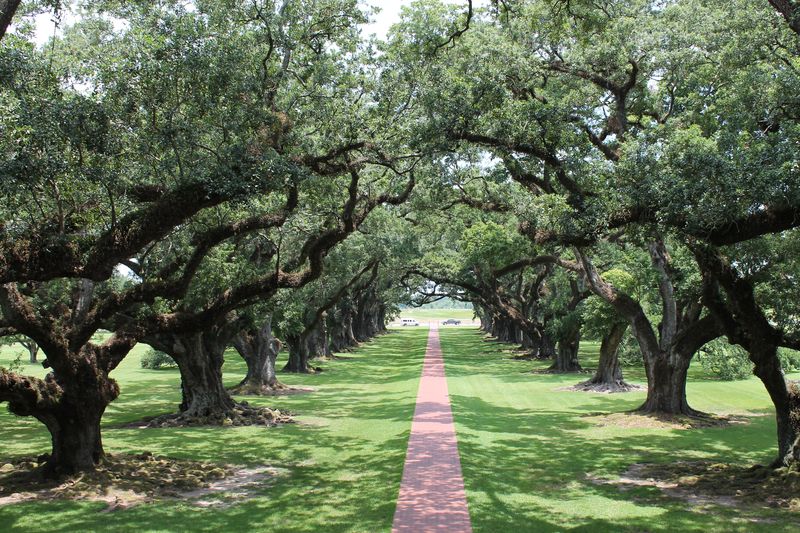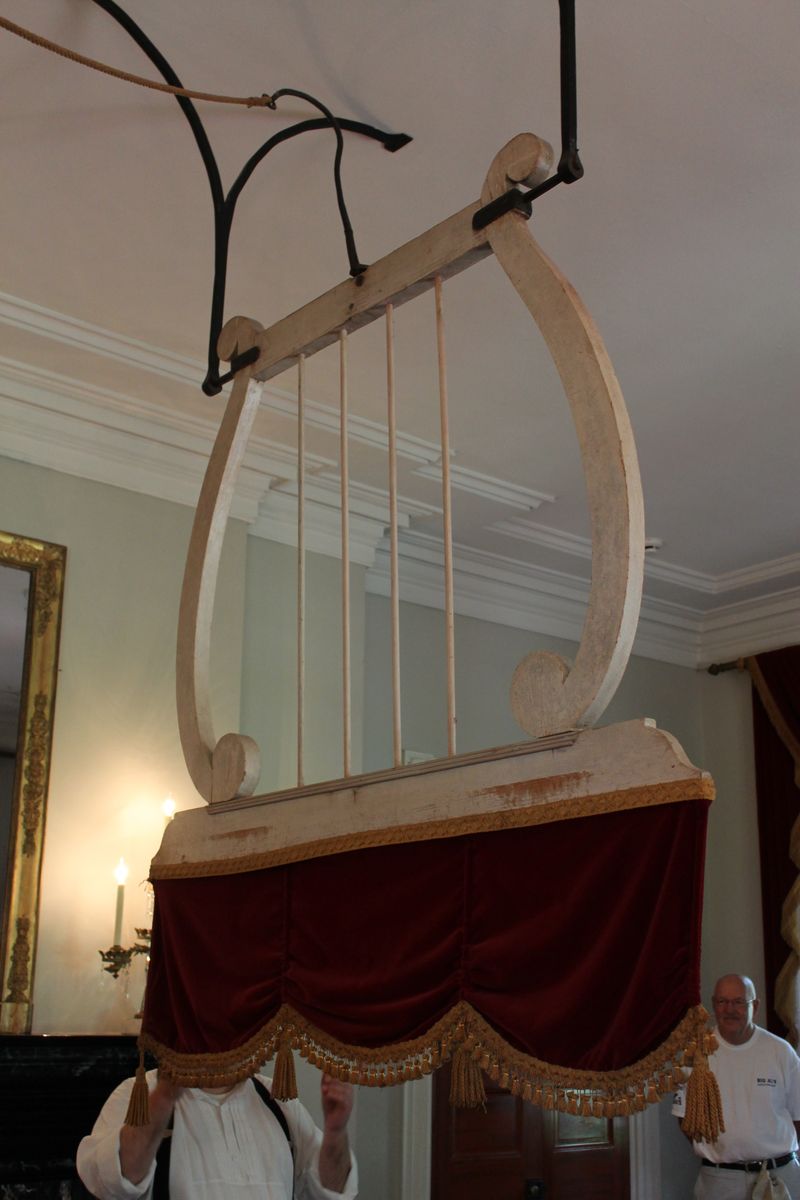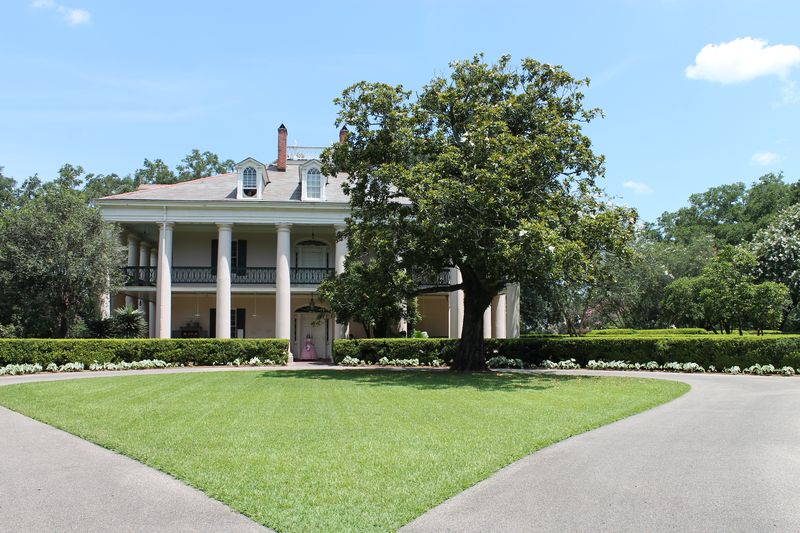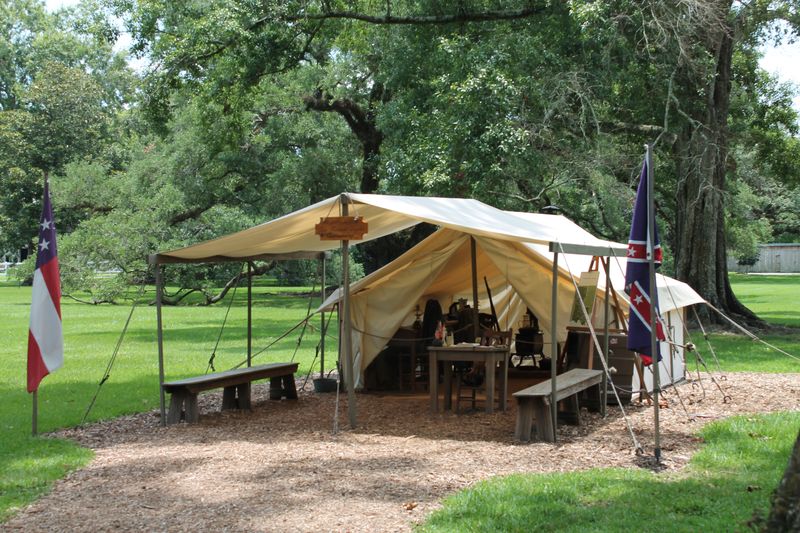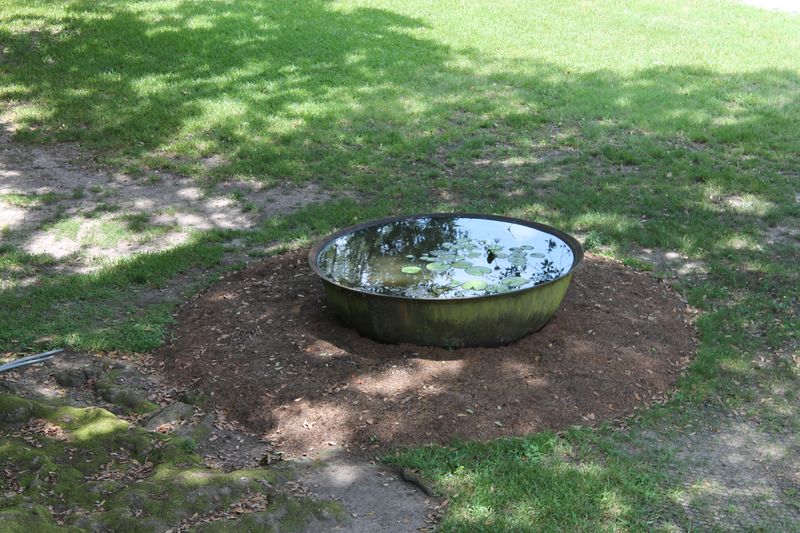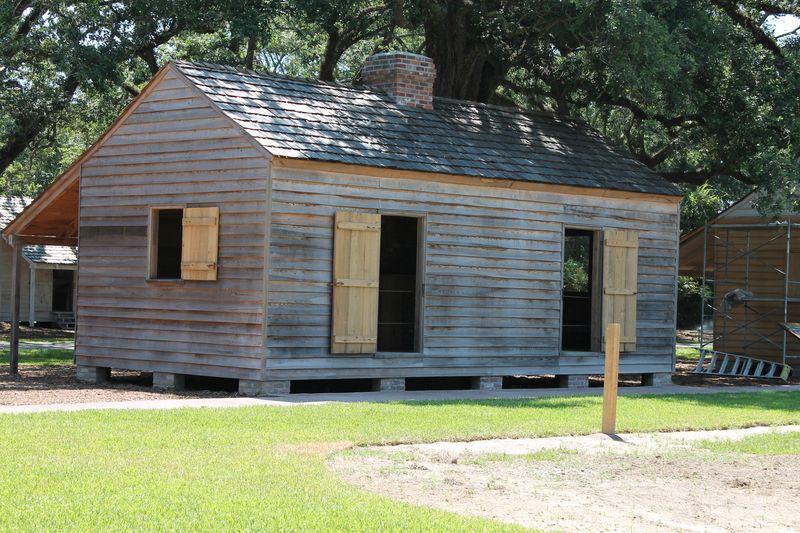My (Slightly Uneasy) Visit to Oak Alley Plantation
A couple of weeks ago, my cousin, Linda, and I drove early on a Monday morning to visit Oak Alley Plantation near the tiny town of Vacherie, LA.
I was in New Orleans to celebrate the marriage of Linda’s daughter’s, Lacey. I rarely get out of the city when I’m there, so this time made a point of putting it on my to do list. Linda worked very hard making sure Lacey had a truly lovely wedding, and was completely stressed in those last couple of days before the wedding, so I suggested she join me on my visit to the country.
I had expected to do a nice, easy little travel post about a beautiful antebellum home here at this blog. I was unprepared, however (yes, perhaps naively), for the uneasy feeling I left with after the visit.
I had pretty much decided not to do this post, until I saw the courage displayed by my friend, Greg, at sipptysup.com, who posted in homage to Trayvon Martin.
While Oak Alley is a lovely old mansion, on a lovely piece of land, that anyone of any ethnicity can now visit or rent for a special occasion, it was formerly a sugar plantation, maintained and kept prosperous and comfortable by the forced labor of 100 male, female and child African slaves.
When I told our family friend, Lloyd, in New Orleans, of my planned visit, he said, “they’re not going to tell you slaves built that big fancy house” – and it’s true, they didn’t, but rather only mentioned the name of some prominent architect of the era who “built” the house.
While there was an acknowledgement of the slaves – a listing on the wall of one of the slave quarters of the names (first only, of course) of each slave who lived on the plantation, there was very little mention of them in the tour guide’s presentation. There was mention in the brochure of Zephyr’s – the plantation’s head slave – purchase of his own, and then his wife, Zaire’s freedom. I suppose that’s more than could be expected on many plantations.
The thing that set me off, though, was the guide’s discussion of the “War between the States.” Okay, I’m already conditioned when hearing that, instead of “Civil War”, to hear something I really won’t like. He said that the South was “drawn into a war that they did not want”, and went on to talk of how the war devastated the prosperity of the South.
Uh- wait a minute. Couldn’t the South have avoided being drawn into the war? Didn’t Southern states secede from the Union? Wasn’t the South’s prosperity built on the back of slave labor? And, btw, another thing not mentioned- wasn’t the labor on sugar plantations among the most brutal?
“Yeah,” my brother Ric said when I told him this story, “I visited one a few years back. What got me most was that big fan the children had to pull.” He’s referring to the “harp fan” hoisted high above the dining table hovering above a block of ice in the center of the table, with a cord attached that young slave boys standing in the corner had to pull continuously throughout the long dinners to keep the masters and their guests cool.
So, am I making too much of this? Oh- did I mention this happened the day after I sat in a coffee shop in Slidell while waiting for a friend.
Slidell gives me a window on the thinking of a segment of society that I don’t bump up against here on the Left Coast. A few years back, I sat in a coffee shop there overhearing a man say to his companions, “but Obama’s mother was as American as apple pie.” As American as gumbo, I remember thinking. Even food is political.
This time it was some proper Southern ladies defending Paula Deen (whose slave wedding idea offends me much more than her use of the “n” word), and George Zimmerman.
Yes, it’s true, so much has changed in America, but let’s not forget how much further we still have to go.
And yes, I am glad that beautiful antebellum homes have been preserved for us to visit today. I also honor the slaves who built, prospered and maintained them, as well as the men who gave their lives to end slavery in this country, and to preserve the Union.
A rebuilt tent encampment for soldiers during the Civil War.
There are vats formerly used for cooking sugar cane all over the plantation which have been repurposed as peaceful little ponds.
A recently rebuilt slave quarter. Linda and I estimated that each quarter must have housed 2 families of about 10 people.
P.S. I f you do decide to visit Oak Alley, I suggest taking a picnic lunch, as the food at the restaurant is very mediocre. Guests are allowed to visit on the plantation grounds all day, however, and there are picnic tables.



